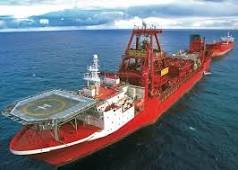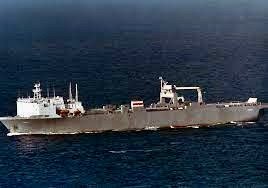addjunkie
Member
- Messages
- 13,584
- Location
- Northumberland. Reet oot in the sticks
A Frigate is quite small in ship terms, though youd not want one dropped on your head. It was always the shaking after the big hit into the waves that got me!When you are on board quite a biggish ship, a frigate for example and she rears up in heavy seas and then comes crashing down and almost stops against the oncoming sea you realise just how insignificant you are and just how powerful that sea is.
The first FPSO Foinaven, I was on started out life as a Russian Submarine support ship called the Anadyr. https://nara.getarchive.net/media/a...argo-ship-anadyr-underway-the-741-foot-ff5815I worked on a Cold War era Russian ship once, MV Baki, built like a tank, as were all Russian ships built in those days. It had sea water deluge system for washing radioactive material off the superstructure, and lots of electrical systems sealed in boxes, that didn’t appear on any of the ships diagrams and paperwork. And all fuel tanks were double skinned, not built into the hill.
Most mysterious thing, for us, was a small tunnel down in the bilges. We could see it from a hatch under the decking in the engine room, it was about 18” square and seemed to run the length of the ship, and there was a room with a light at the far end, that we could not find for love nor money, it was sealed off somewhere in the bow. We could see that using binoculars. Nobody was ever brave enough to crawl down it to see what it was for. There were no rails, just the ribs of hull to climb over, every 18”. Which is very unusual for a ship, normally 24”.
It was a sad ship, I was the only Brit, and one Scot, the rest were Russians, or Polish seamen.
Very well built in Finland. Before the conversion she was an odd thing, the floodable dock was to fix subs in trouble at sea. Very interesting rows of bunks and all the tools were all still on board. Must have been a fairly bleak existence for the crew. The framing was also very close together which is part of the reinforcing to get an ice class for operations when there may be a need to break thin ice. The original idea was to use the floating dock as tankage and have an oil processing plant on deck. But it was decided it wasn't a big enough storage capacity, to suit the predicted oil production in the North Atlantic, causing shutdowns when full, if they couldn't offload due to bad weather. So a new mid section was built and the middle cut out. Then all stuck back together. Since this is a welding forum while compiling all the documentation to allow us to start the thing up, there was only ever one name of their only coded welder in the yard on any of the paperwork.
It ended up looking like this, in reality a floating bomb, but it lasted a hard 27 years producing in the North Atlantic, before departing to a breakers yard. I have vivid memories of the helideck doing 130 feet of vertical movement the first winter. Surf would run along the deck under the process plant, all just became kind of normal. For perspective the tanker behind will be about 80000 tons. She was eventually retired due to hull cracking. Must have been a good job as a few of the guys who were down in Spain for the construction were still there when she was towed off station for scrap. I left in 2006 for sunnier climbs, after almost 11 years on the job.









